Taste the Sunshine

The most flavorful tangerine around! Pixie Tangerines are a cross between a King and a Dancy tangerine; they are tiny and easy to peel, making them popular for lunch boxes or office snacking. These tangerines are not only sweet and delicious, but they are also seedless and have very low acidity, perfect for juicing! Like most tangerines, they are an excellent source of vitamin C. Pixies are best when eaten immediately, but you can also store them in the refrigerator for 1 to 2 weeks.
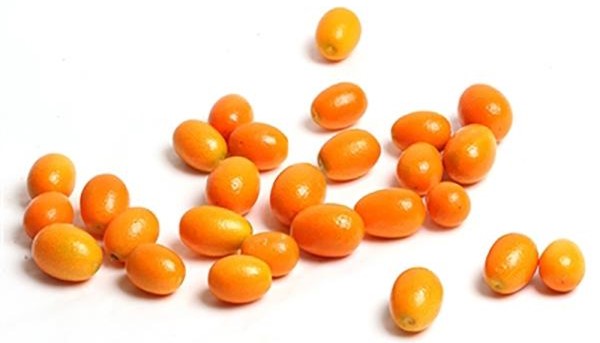
Originally introduced to the US in the mid-19th century, Kumquats have been a familiar fruit in Japan and China for thousands of years. This tiny citrus is bright orange, shaped like an egg, and is entirely edible; the sweet, thin rind offsets the tart flesh. Kumquats are great as a snack or even when candied. Kumquats are generally available year-round, with a few gaps in growing regions.
Kumquats are best when kept refrigerated. Select fruit with bright orange skin with no blemishes.
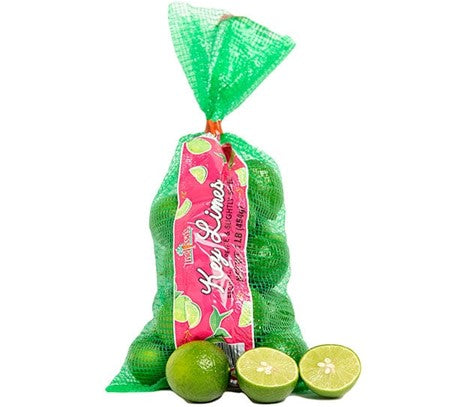
Melissa's Key Limes are small, delicious citrus that is available year-round and very versatile. They are smaller than common limes, have several seeds, and are very fragrant. This particular variety is used in many tropical cuisines throughout the world. In general, limes are a staple in Mexican, Caribbean, Central and South American, African, Indian, Middle Eastern, Southeast Asian, and Pacific Island cooking.
Typically, fresh lime juice is used to flavor or enhance recipes; try a squeeze of fresh lime juice over your favorite dish, and you will be pleasantly surprised. You can also use it as a meat tenderizer or marinade.
Key Limes can be stored at room temperature or in the refrigerator for longer shelf life. Always rinse any citrus fruit before slicing and using it in recipes or drinks.

Cara Cara Oranges originated in Venezuela and are now available in the US. These are unusual navel oranges; they look like regular oranges on the outside, but once you cut them open, you'll discover a sweet and juicy rosy-colored flesh, giving them the reputation of being a superior-tasting orange.
They are great as a snack on their own or supreme and create beautiful presentations for your salad and baked goods recipes. Cara Cara Oranges are generally seedless, making them great for juicing!
Use immediately for the freshest flavor, or store at room temperature or in the fridge for about one week. The juice and zest can be frozen for up to 3 months.
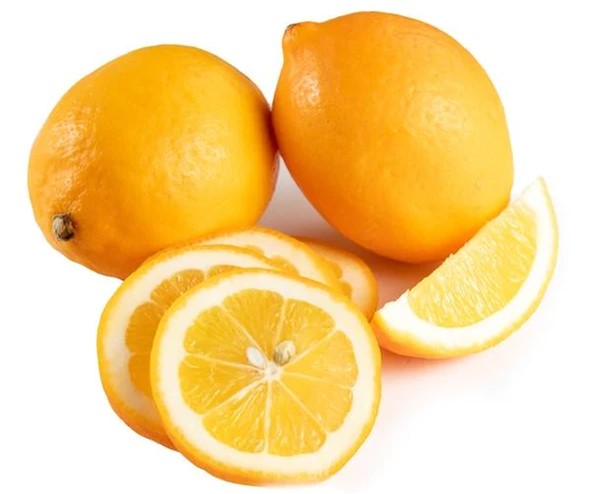
Meyer Lemons are also referred to as cooking lemons and are thought to be a cross between a Lemon and an Orange. The Meyer Lemon tree was brought to the US from China in 1908 by an employee of the US Agriculture Department named Frank Meyer. It was first used as an ornamental tree about 20 years ago. Some chefs in California discovered their delicious flavor and fell in love with them, creating the need for a few small commercial growers to produce them. Meyer Lemons are sweet-tasting and can be eaten whole, including the skin and seeds. They have a nice tartness that gives a kick to everything they are used in. They are particularly well suited for desserts because of their flavor. Meyer Lemons should be used immediately after purchasing (within 2-3 days). Store in the refrigerator for the best flavor.
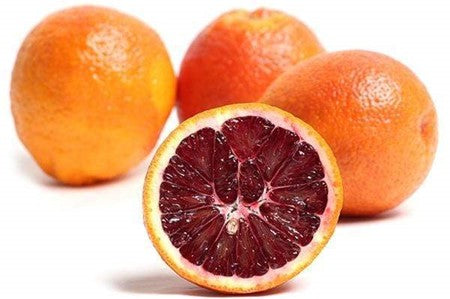
Melissa's Blood Oranges are currently grown in California. These delicious sweet oranges get their name because of the red juice that turns the flesh, and sometimes the rind, a deep "blood" red. The juice is delicious and often served in fine restaurants instead of regular orange juice. Most Blood Oranges are seedless, but some varieties contain seeds.
Blood Oranges are an excellent source of vitamin C. They are best when kept in the refrigerator and eaten within several days of purchasing.
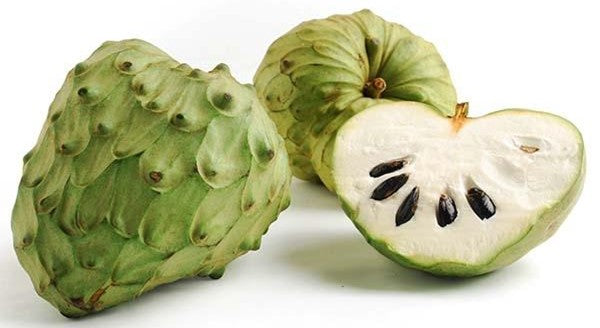
Also known as Custard Apple or Custard Fruit, Cherimoya is a delicious heart-shaped fruit. It is considered a delicacy in the exotic fruit arena; they are hand-pollinated, making them a time-consuming commercial crop. Since Cherimoya is grown in so many areas now, supply is not a problem. The flesh is cream-colored, containing large, black, inedible seeds. The flavor is similar to a blend of strawberry, mango and pineapple. To eat one, simply cut into wedges and spoon out the creamy flesh while discarding the seeds. The fruit is generally consumed as-is, but you can also use them in drinks, fruit salads or desserts.
Keep at room temperature until ready to eat or store in the refrigerator for a few days after ripening. Cherimoyas are not a low-calorie fruit; they contain about 94 calories per 3 ½ ounce serving, and they are also a source of vitamin B and fiber.
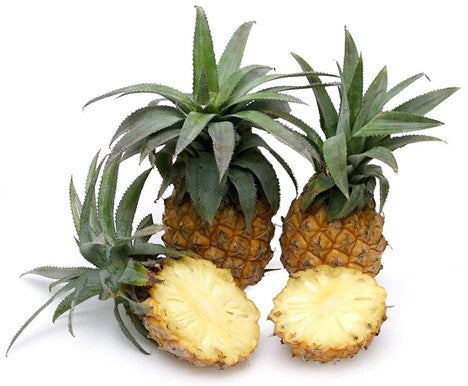
South Africa is praised for these golden Baby Pineapples with brilliant yellow flesh. This sweet, tart pine has a bold, rich flavor incomparable to other varieties. The South African Baby Pineapple flesh is entirely edible, meaning you can eat the core, too! A fun way to serve these is to cut off all the sides, wrap the crown in a paper towel, turn it over, and eat it like a popsicle! Alternatively, you can cut off the top, hollow out the middle, and use it as a vessel for refreshing poolside beverages. Their size averages about 4.5 inches high and 3.5 inches in diameter, making one pineapple a perfect serving for 1-2.
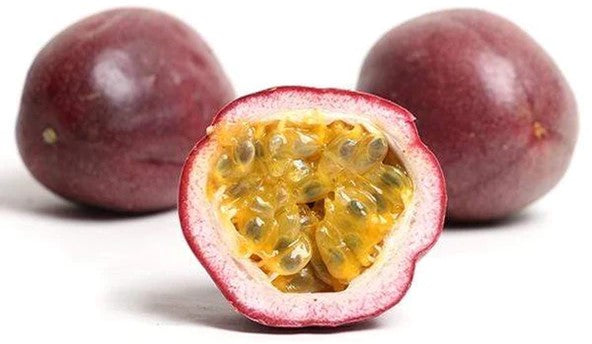
Passion fruit originated in South America, most likely Brazil, and is now grown worldwide. The fruit comes from the beautiful tropical passionflower, which has an absolutely wonderful fragrance. Passion Fruit is generally purple but can also be golden and has a jelly-like golden flesh filled with soft, edible seeds. Passion Fruit is round or egg-shaped, with a thick, hard shell that gets wrinkled as it ripens.
Contrary to popular belief, passion fruit is named for the passionflower. The bloom is thought to symbolize various parts of the Passion of Christ and not because of the passionate powers it was once believed to contain. Passion Fruit is generally eaten fresh but may be cooked for use in sauces and fillings. Simply halve the fruit and scoop out the pulp and seeds with a spoon.
Purchase passion fruit with smooth skin for later use or with wrinkled, dimpled skin for immediate use. The more wrinkles, the better it will taste! Passion fruit is best stored at room temperature but can be frozen once the flesh is removed from the shell. Passion fruit is very low-calorie, with about 18 calories per medium-sized fruit, and contains vitamins A and C.
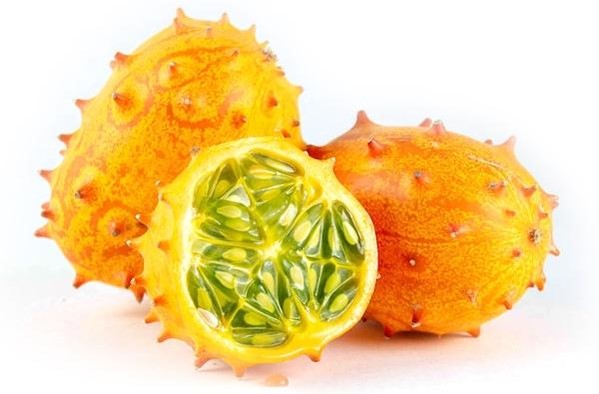
Also known as the African horned melon, this fascinating fruit contains a lime green, jelly-like inside with a cucumber texture. The taste is a subtle combination of cucumber, banana, melon and lime. The outer shell is spiky golden-orange and is often used as a serving dish filled with fruit salad, dip, or other delicious recipes. Kiwano Melons are also used to create exotic tropical drinks or delicious sauces for seafood, poultry and vegetables.
Kiwano Melons last for several weeks without refrigeration, and once they "give" to the touch, they are ripe and ready to eat. Do not store them near apples or bananas, as these fruits will shorten their shelf life.
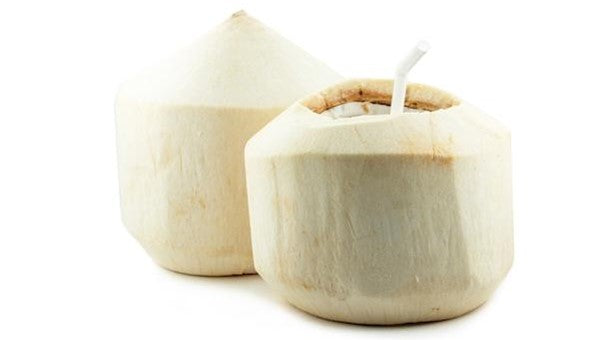
Melissa's delicious Sweet Young Coconuts are a fun way to enjoy the tropical flavor of coconut! These young coconuts don't have the hard husk like a mature coconut, making them popular for snacking and cooking. The coconut's refreshing water is often used in exotic drinks, curry dishes, or all by itself for a delicious treat. The inner flesh of a sweet young coconut can be easily scooped out to eat as a snack or to use in recipes; it is terrific in salads, soups or desserts.
Sweet Young Coconuts are very perishable, so it is essential to keep them refrigerated. They are available year-round and should last about two weeks in the refrigerator.

Convenient and perfect for snacking or baking, use this delicious coconut meat in salads, side dishes, or entrées to add a touch of exotic flavor. Once you've tried this convenient ready-to-eat product, you will never buy a coconut in the shell again!
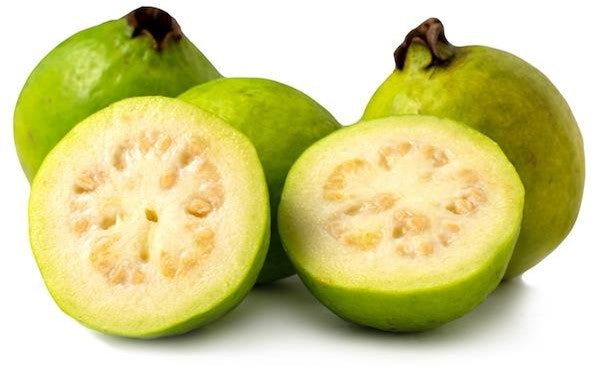
This aromatic and delicious fruit from California is also known as the Guayaba. It is often mistaken for a Feijoa, but it is a true Guava. Guavas have a firm, crisp texture and a mildly sweet-tart flavor with an edible rind and small edible seeds. The fruit is ripe when soft and creamy in texture. Guavas are generally eaten fresh in fruit salad, desserts, preserves, sauces or as juice.
Melissa's Guavas are available year-round. Store at room temperature or in the refrigerator for longer shelf life.
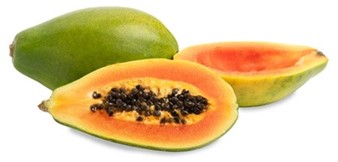
Melissa's Strawberry Papayas are the sweetest, most flavorful of all papayas. They are a beautiful green on the outside and have fragrant and juicy salmon-pink flesh. Strawberry Papayas are delicious in fruit salads, tropical drinks or even grilled; simply slice in half, remove the seeds, and scoop out the flesh to use in your recipes. Papayas also make a delicious marinade, as they can help tenderize meat. Try them sliced for breakfast or over ice cream for dessert — any way you eat them, you will love them!
Strawberry Papayas are available year-round. Store at room temperature to ripen, then transfer to the refrigerator until ready to eat.
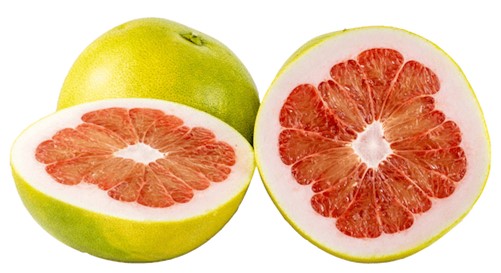
The pummelo is sometimes referred to as a Chinese Grapefruit or "shaddock" and is a native fruit of Southeast Asia. Pummelos are often considered a "good luck" fruit, especially during Chinese New Year. They are considered a distant relative of the common grapefruit, featuring a very thick rind with flesh about the same size as a regular grapefruit. They are delicious as a snack or for juicing.
Pummelos should be eaten as fresh as possible for the best flavor, but they can be kept refrigerated or at room temperature until then. They are an excellent source of vitamin C. In China, pummelos are thought to aid digestion, making them even more popular.
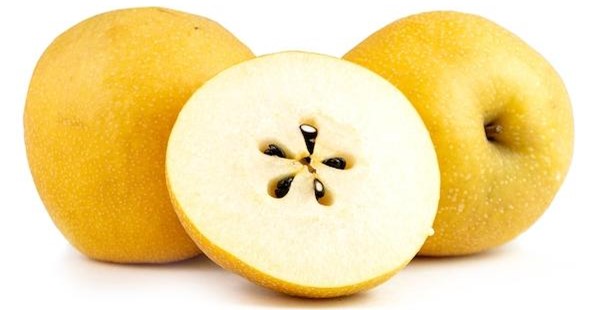
Asian pears taste very similar to a pear but resemble an apple. There are hundreds of varieties of Asian pears available today, making them available mostly year-round. The fruit is delicious eaten out-of-hand, featuring firm and crunchy flesh with plenty of thirst-quenching juice. Asian pears are great on fruit platters, salads, pies and desserts, or wherever you would use an apple.
Most Asian pears will last about 30 to 60 days when refrigerated, but it is always best to eat them as soon as possible. Store in the refrigerator, wrapped so they will not bruise. Most Apple pears are hand-picked and individually wrapped during harvest to prevent any bruising during shipping.
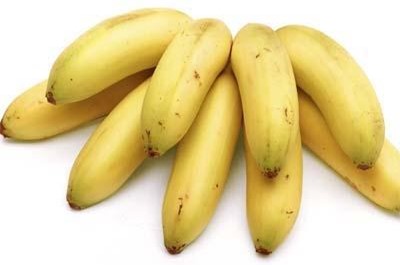
Also called Niño, Ladyfinger, or Finger Bananas, Melissa's Baby Bananas are smaller than the most popular yellow Cavendish banana and are actually sweeter. They are native to tropical climates like Central and South America, the Caribbean and Mexico. Familiar in Latin American, African and Asian cooking, Baby Bananas are amazingly versatile. This small, crunchy specialty banana is usually eaten out-of-hand or sliced raw in fruit salads.
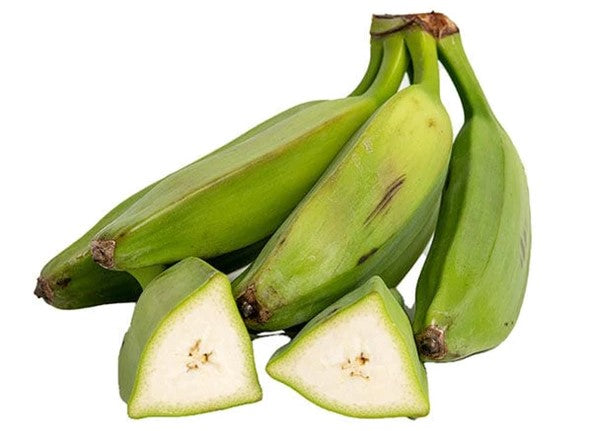
This banana's shape is flatter, smaller and squarer, yet just as versatile as other bananas. The Burro Banana is described as having a tangy, lemony flavor. Once ripe, the soft flesh is creamy white or yellow with some firmness toward the center. When firm, the Burro Banana can be sliced and added to cereals or made into banana chips. The Burro softened can also be mashed and used in cakes and other dessert recipes.
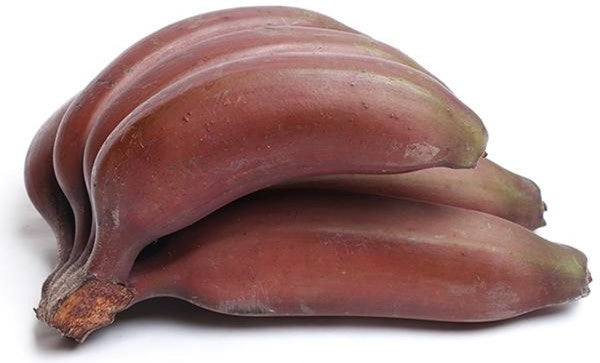
A sweet banana with a touch of raspberry flavor, the short and plump Red Banana is easy to distinguish. The slightly pink and creamy flesh within a reddish-purple skin is often used to add flavor and color to many dishes. Similarto the traditional banana, this tropical fruit is imported from Central America, generally, Ecuador. Red Bananas are great in fruit compotes and salads or used in baking as you would any banana.
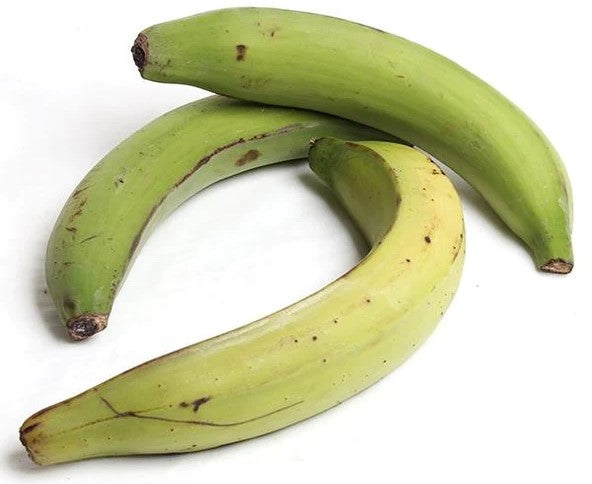
Larger and firmer than dessert bananas, plantains are commonly used as vegetables rather than fruits because of their lower sugar content. These are extremely popular in Latin American countries; plantains are also favored in West Indian and African cooking. Plantains are rarely eaten raw unless completely black to ensure ripeness and are usually baked or fried and served like a potato. These "cooking bananas" have a mild, squash-like flavor and are used in a wide range of savory dishes.

